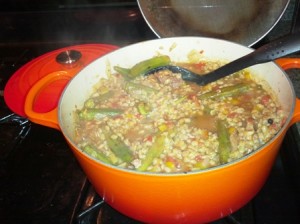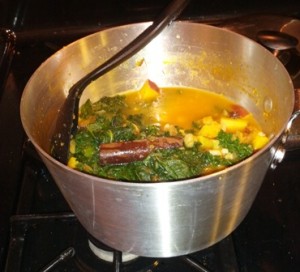Mekhala‘s Asian cooking pastes are organic, vegan, and gluten free, and we were lucky enough to get our hands on a few of them. Of the dozen or so available varieties, the four that we cooked with were the Yellow Curry (Thai), Red Curry (Thai), Lemongrass Turmeric (Vietnamese), and Sichuan Mala Chilli (Chinese).
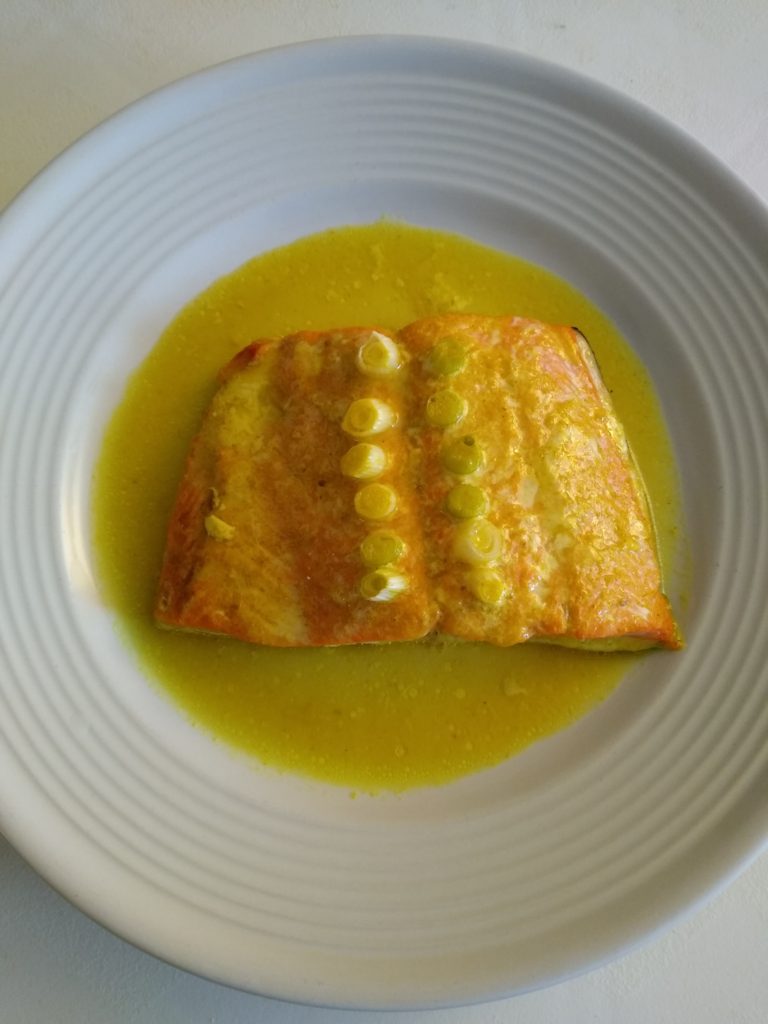
Lemon Turmeric Wild Coho Salmon 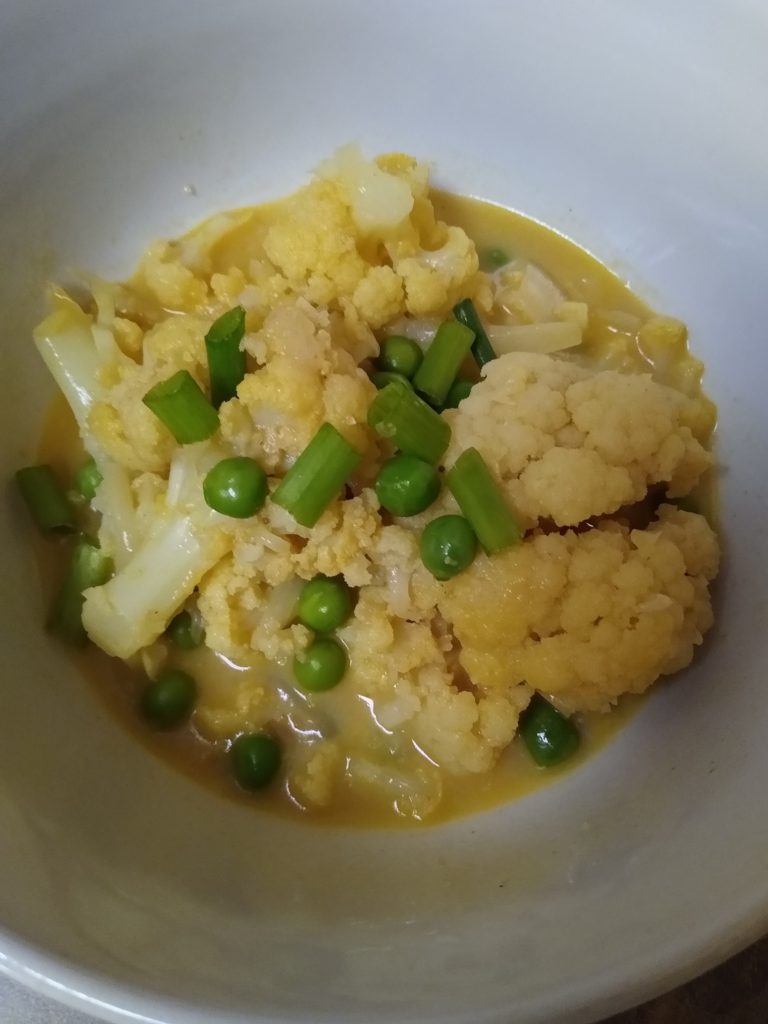
Yellow Curry Cauliflower Stew
The Yellow Curry paste worked well with coconut milk in a vegan cauliflower, peas, and onions dish. This was my second favorite of the four dishes shown here, and my dining partner’s favorite.
We used the Lemongrass Turmeric paste with coconut milk on wild salmon, which was my favorite of the four dishes. The scallions absorbed a ton of flavor, which helped make this a tasty combination.
The Red Curry with coconut milk and Lotus Foods Organic Jade Pearl Ramen (green noodles) was a wonderful soup you might expect to find in a restaurant, so it was nice to have it at home. This was my dining partner’s second favorite dish of the four.
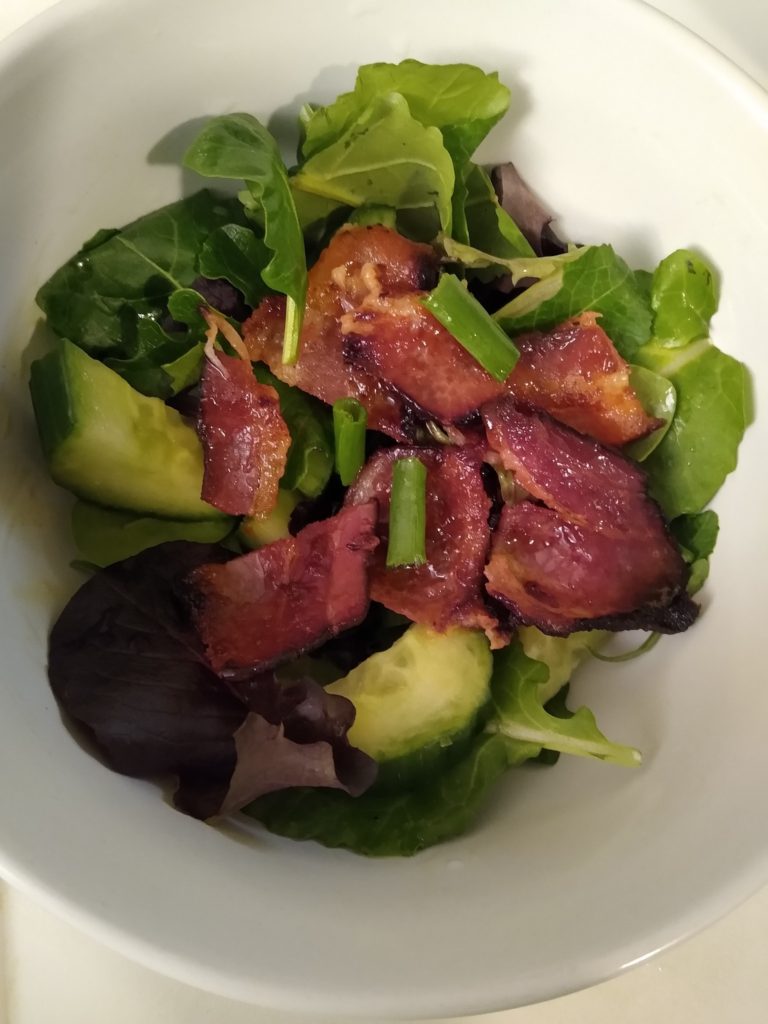
Sichuan Mala Chilli Bacon Salad 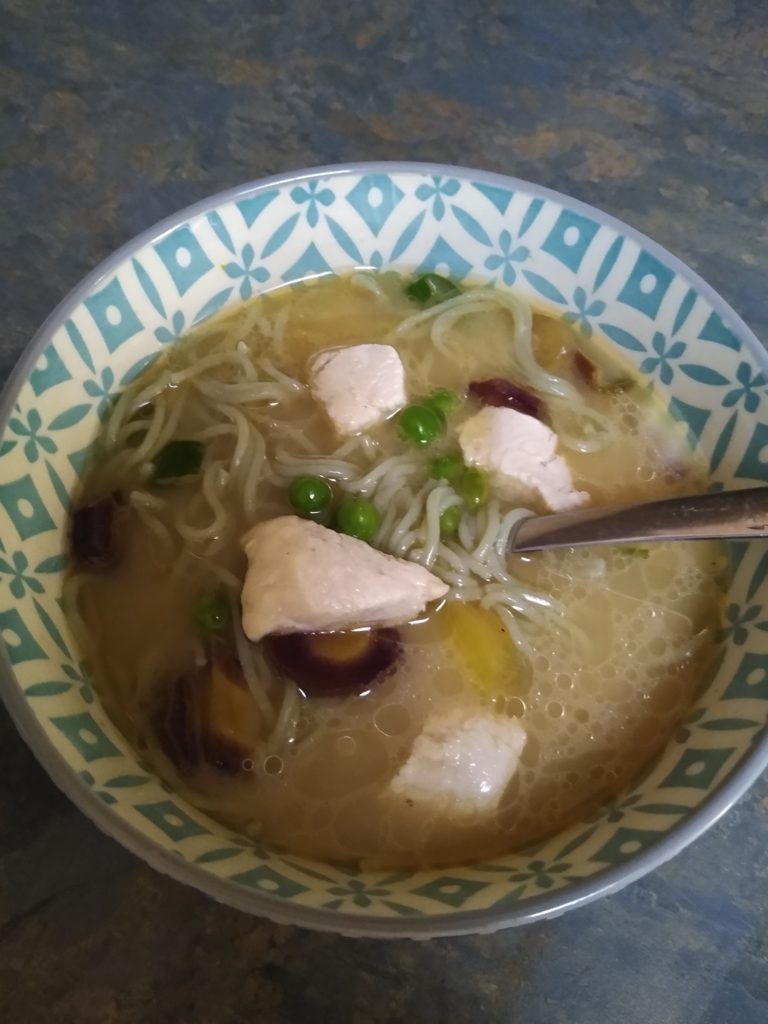
Red Curry Jade Ramen
We combined the Sichuan Mala Chilli Paste with apricot preserves and a little lemon juice, and applied it to the bacon prior to cooking. This gave the bacon a nice sweet, sour, and spicy flavor, and a color that might put off people (like my dining partner) who aren’t used to eating bright red meat.
Whole Foods and Mom’s each carry a few of Mekhala’s varieties. I’m keeping an eye out for the Thai Basil Garlic paste. Mekhala also has a line of sauces and dressings such as Pad Thai and Thai Chilli. Once you have some of Mekala’s products in your pantry, you can use some of the recipes on their website, or experiment like we did. And yes, these dishes all involved some cutting and pastes. 🙂
-JAY
Editor’s Note:
Mekhala was nice enough to send several of these products for us to review. The Yellow Curry paste was purchased at Whole Foods.

